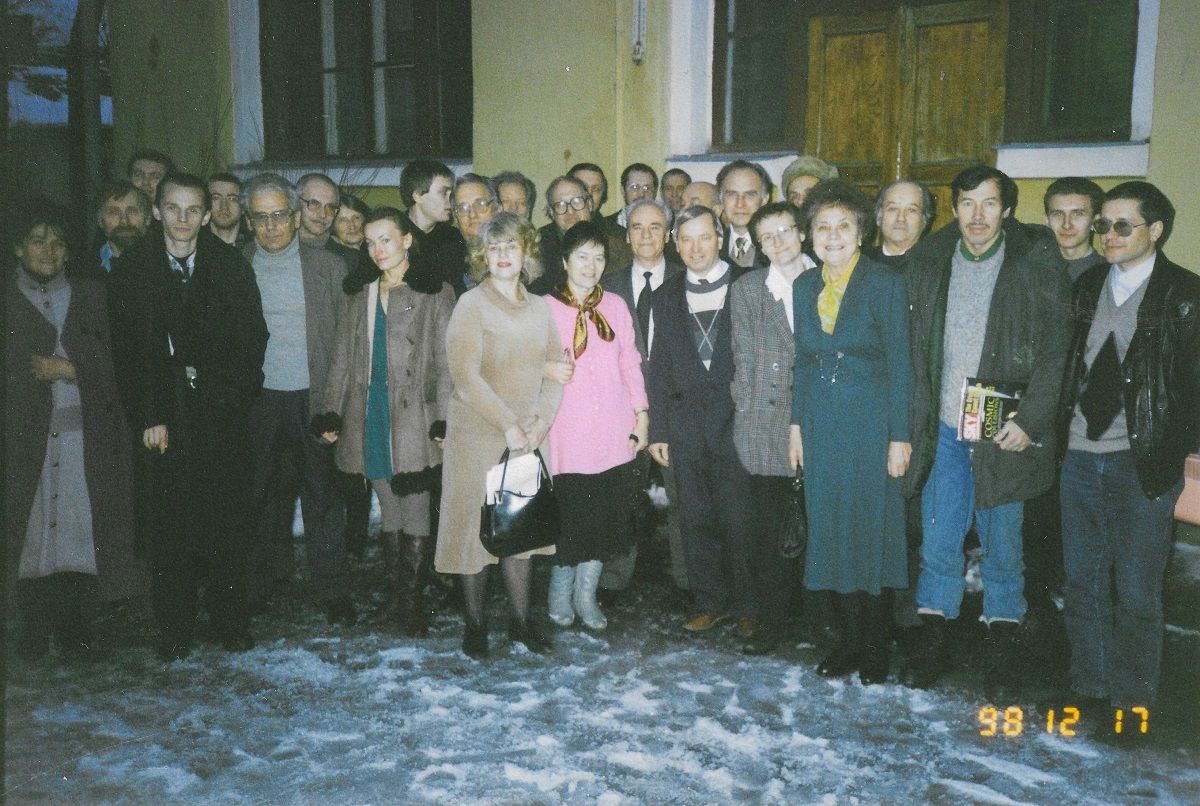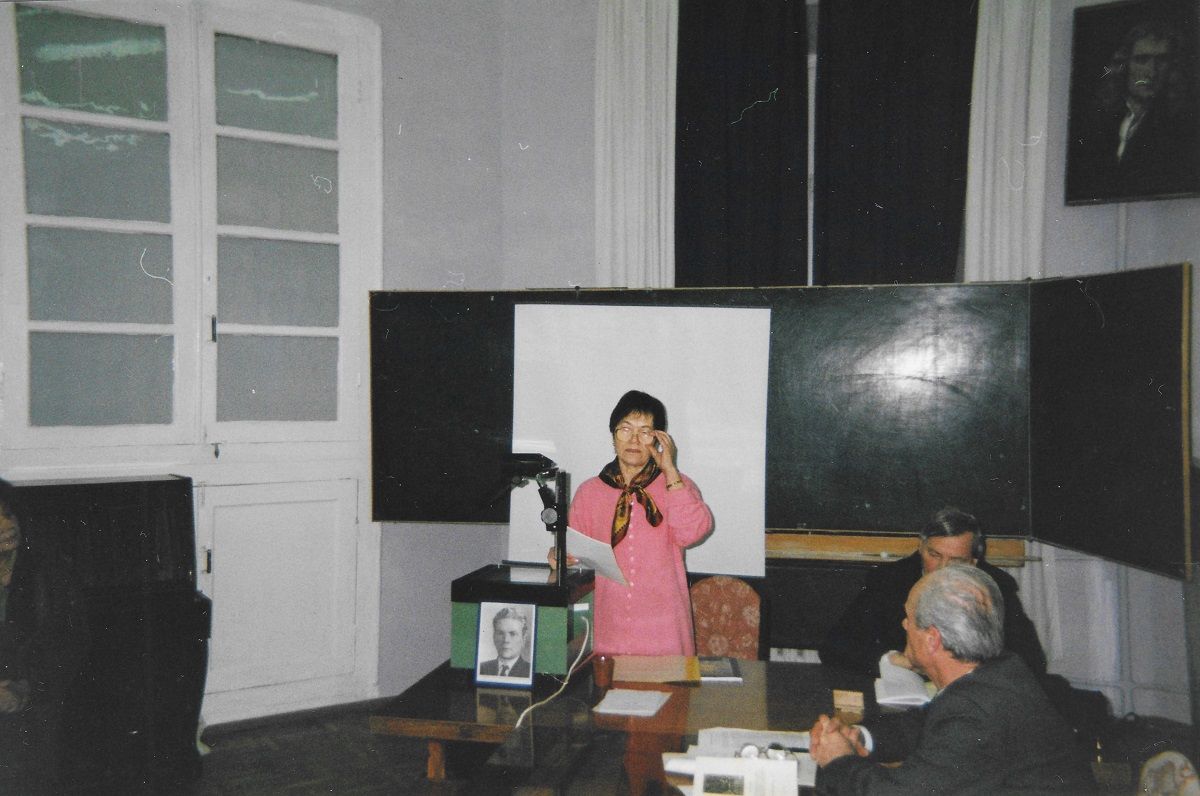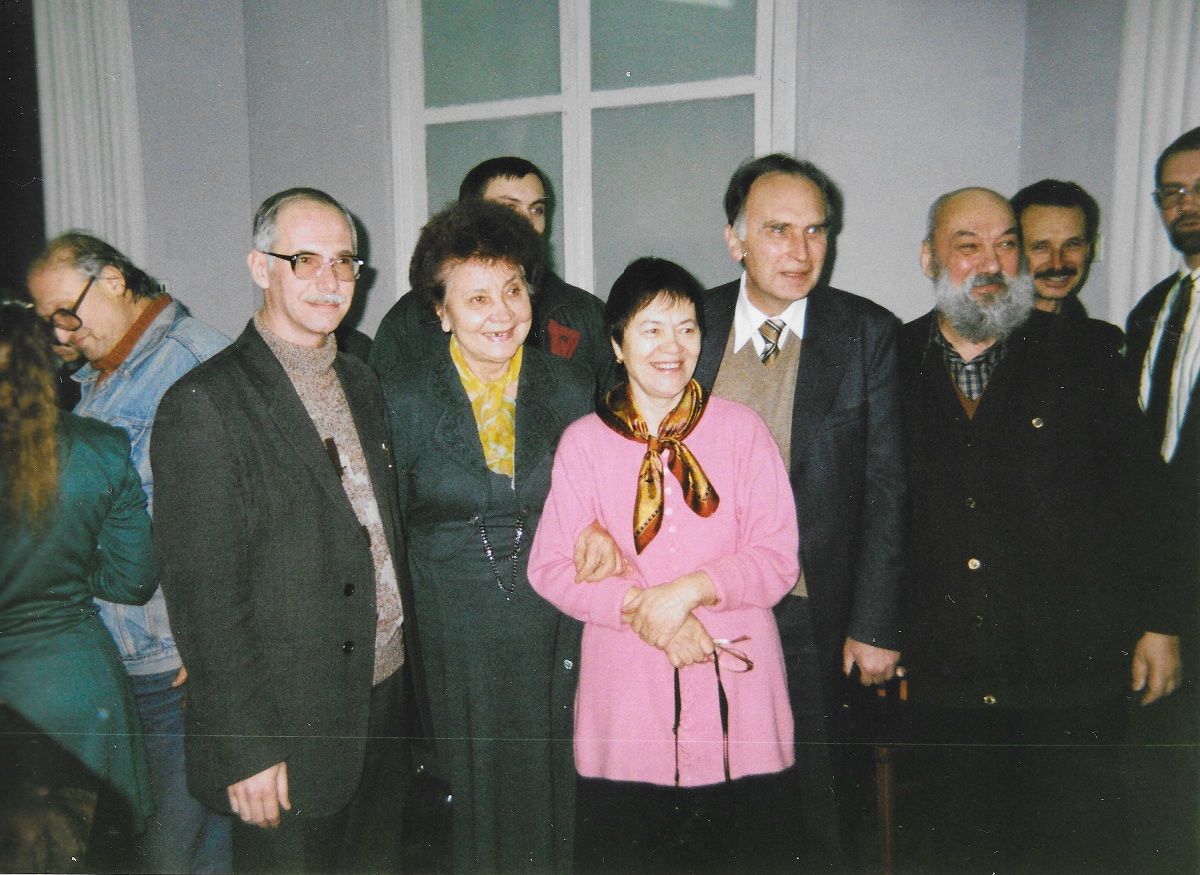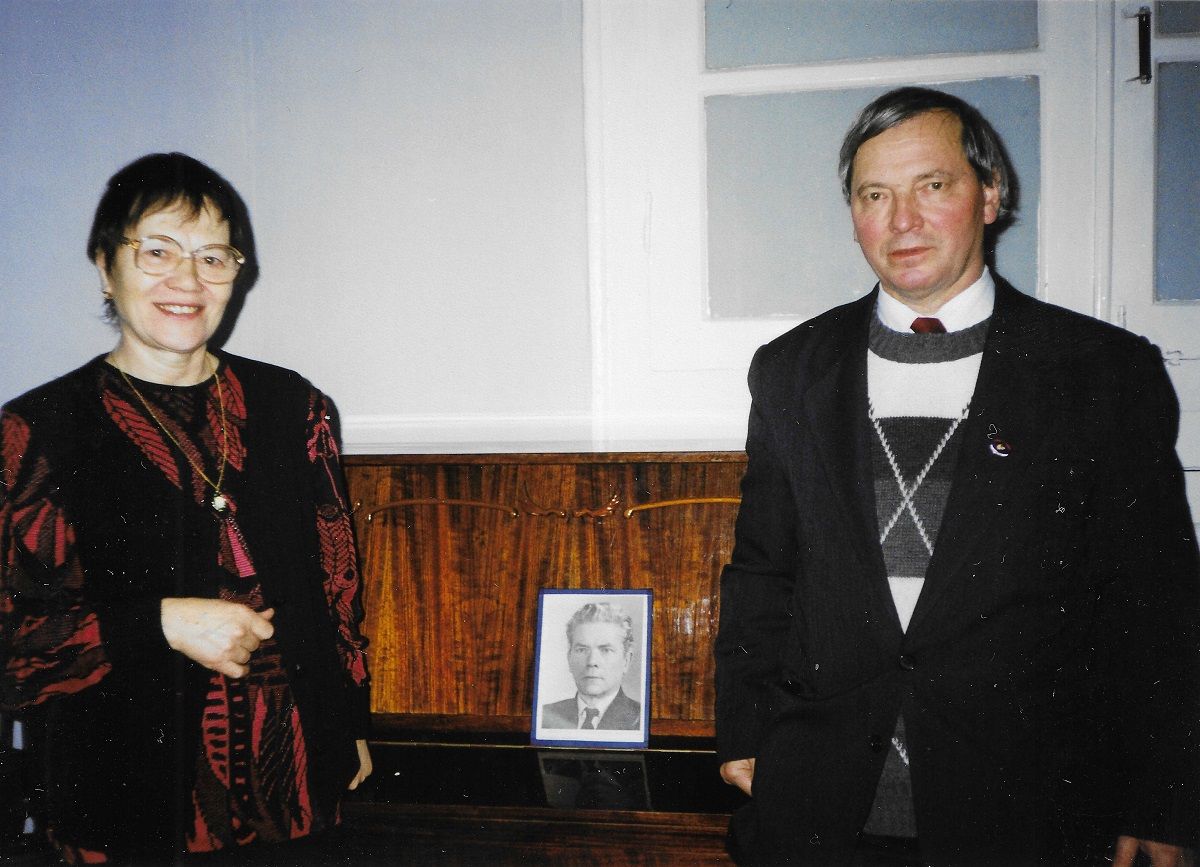By Alexandra Terentjeva and Ilya Kurenya
Abstract: During observations of meteors in high-altitude conditions in 1947 I.S. Astapovich discovered “blue” trails of meteors (Astapovich, 1947; 1951). This phenomenon remained, unfortunately, unknown in meteor astronomy for 76 years. The article acquaints meteor researchers with this phenomenon and sets objectives for its study.
Introduction
Our article aims to draw attention to the phenomenon of “blue” trails of meteors in meteor astronomy. It was discovered by I.S. Astapovich 76 years ago (Astapovich, 1947, 1951) and remained unknown in the scientific world.
Detection of “blue” meteor trails
In September 1947, I.S. Astapovich made visual observations of meteors from the site of the High-Altitude Station of the Astrophysical Laboratory of the Turkmen Branch of the USSR Academy of Sciences in the Central Kopet Dagh, Kheirabad plateau at H = 2234m, 52km from Ashkhabad. The dust atmosphere lies here beneath the feet on average 1.3km lower, with the transparency coefficient of 0.957, and at zenith distance of Z ≤ 50° usually visible stars are of 7.0m–7.2m (Astapovich, 1947).
Under these conditions, I.S. Astapovich was able to discover a new phenomenon, which he describes as follows (Astapovich, 1951): “sometimes in the pre-dawn hours, the usual appearance of meteors was preceded by a faint bluish glow. The phenomenon resembled the flight of a meteor making a very pale ionization trail. The meteor itself remained invisible and appeared in its usual form only a few degrees later, after the disappearance of the “blue” trail. This “blue” trail was brighter than the sky background by 30–50% or more, being quite wide (up to 1°–2° at zenith); it seemed delicately radiant, as if “furry”, and disappeared within 1–2 seconds, turning into a pale solid line. Under plain (valley) conditions, despite repeated attempts in 1948–1951, we never managed to see such “blue” trails, whereas in Kheirabad in 1948 they were again seen with some meteors. Probably, the emission of “blue” trails is rich in short waves which are absorbed in the lower atmosphere. With the height of the appearance of meteors with “blue” trails taken as H1 = 110km and their disappearance height taken as H2 = 75km, the localization area of “blue” trails appears to be within H = 160–120km. Their linear width is calculated as 2–5km. In 1947–1948 we provided basic observations of meteors with binoculars and astronomical binoculars. Several good observations are given among 57 meteors for a group of very high (H = 160–120km) but weak meteors which are of a somewhat unusual appearance. One of them was observed on August 4, 1948, from 4 (!) locations, and all observations were consistent. Summarizing these data, supplemented by observations from 1949–1950 (trigonometric determinations of 350 meteor heights on bases of 22.1km, 24.0km, 38.0km, 46.2km), carried out at altitudes of up to 2700m, we must conclude that in some cases conditions may arise, conducive to the formation of the “blue” trails described above. The latter may probably occur mainly as a result of ionization of air by short-wave emission from a meteor or (to a much lesser extent) by the impact of ejected air particles. The third type of meteor ionization, thermal, is yet irrelevant here.
For the sake of brevity, we suggest the name of “blue” trail of meteor for this phenomenon”.
Further, I.S. Astapovich (1947) reports that observations of meteors carried out under the above-mentioned high-altitude conditions gave in fact somewhat unexpected results. For example, the path lengths of λ of ordinary 2m–5m meteors are 80–100% longer than those observed under “plain” conditions. The relative number of weak meteors is very high, which makes their distribution curve significantly different from usual. These meteors belong to a multitude of tertiary radiants, totaling several dozens, acting simultaneously. Weak meteors strongly increase the absolute hourly number nh. For example, on September 22, 1947, between 0h00m–0h30m UT nh = 40 versus normal nh = 18–20 in Ashkhabad. The number of telescopic meteors up to 10m seems to be almost double.

Figure 1 – The International Conference “Physics and Dynamics of Small Bodies of the Solar System”, dedicated to the 90th anniversary of the birth of the outstanding astronomer and founder of Soviet meteor astronomy Prof. I.S. Astapovich. The conference was organised by the Astronomical Observatory of the Kiev National University on December 17–19, 1998, and was held at this observatory (Photo from the personal archive of A.K. Terentjeva).

Figure 2 – The International Conference “Physics and Dynamics of Small Bodies of the Solar System”, dedicated to the 90th anniversary of the birth of the outstanding astronomer and founder of Soviet meteor astronomy Prof. I.S. Astapovich. The conference was organised by the Astronomical Observatory of the Kiev National University on December 17–19, 1998, and was held at this observatory (Photo from the personal archive of A.K. Terentjeva).
Conclusion
What problems can be put forward for study of the “blue” trails of meteors? First of all, basic photographic observations alongside visual observations are needed to determine the exact heights of the appearance and disappearance of “blue” trails and a number of other characteristics. It is necessary to find out the dependence of the appearance of “blue” trails on stellar magnitude, velocity, etc. Of course, it would be good to understand what conditions may arise in some cases in the atmosphere, contributing to the formation of “blue” trails.
Further, it is also necessary to know the diurnal and annual variations for “blue” trails of meteors. As for the diurnal and annual variations for ordinary gas trails of meteors, this question is studied well enough (Astapovich, 1966). The following data can be provided according to I.S. Astapovich (1958): “It follows from the Ashkhabad series of observations, that in spring and in the morning, trails occur “less willingly”, and those which occur keep intact less and their trail is less lasting. Before and after midnight, trails are twice as rare, with the optimum falling between 11 p.m. and 3 a.m. During the year, the largest number of trails falls in August, and the smallest number in February-March. This is the influence of large showers. Taking them into account, we still find the annual maximum in autumn and the minimum in spring. It is not only the number of trails that experiences diurnal and annual variations, but also their duration of their radiance, drift velocity, and other characteristics”.
In conclusion, we would like to express the hope that the “blue” trails will find their enthusiastic observers of meteors under high-altitude conditions and that the mere fact that they will see them will be a step towards their study.

Figure 3 – The International Conference “Physics and Dynamics of Small Bodies of the Solar System”, dedicated to the 90th anniversary of the birth of the outstanding astronomer and founder of Soviet meteor astronomy Prof. I.S. Astapovich. The conference was organised by the Astronomical Observatory of the Kiev National University on December 17–19, 1998, and was held at this observatory (Photo from the personal archive of A.K. Terentjeva).
Acknowledgment
This paper was translated into English by I. Kurenya.
The authors thank Paul Roggemans for his efforts enabling the preparation and publication of this paper.
References
Astapovich I. S. (1947). “Some results of meteor observations in high-altitude conditions”. Astron. Tsirk. AN SSSR, No. 67, 4–5. (In Russian).
Astapovich I. S. (1951). “On “blue” trails of meteors”. Astron. Tsirk. AN SSSR, No. 121, 4–5. (In Russian).
Astapovich I. S. (1958). “Meteor phenomena in the Earth’s atmosphere”. Fizmatgiz. (In Russian).
Astapovich I. S. (1966). “Some results of visual observations of meteor trails”. Results of researches of international geophysical projects: Meteor Investigations. No. 1. Publishing House “Nauka”, Moscow, pages 7–61. (In Russian).

Figure 4 – The International Conference “Physics and Dynamics of Small Bodies of the Solar System”, dedicated to the 90th anniversary of the birth of the outstanding astronomer and founder of Soviet meteor astronomy Prof. I.S. Astapovich. The conference was organised by the Astronomical Observatory of the Kiev National University on December 17–19, 1998, and was held at this observatory (Photo from the personal archive of A.K. Terentjeva).




